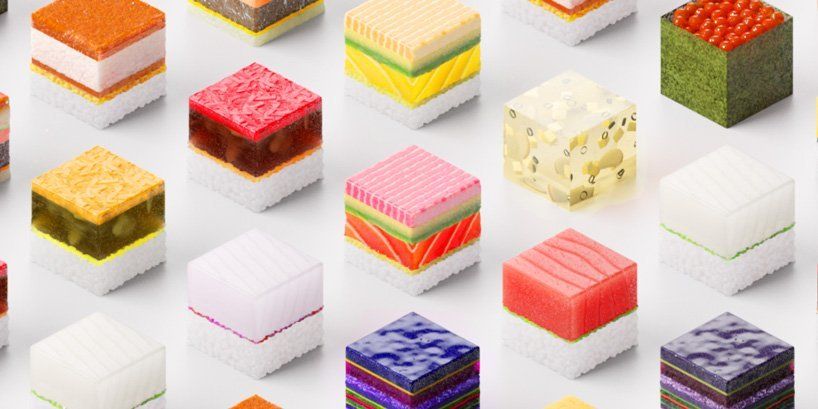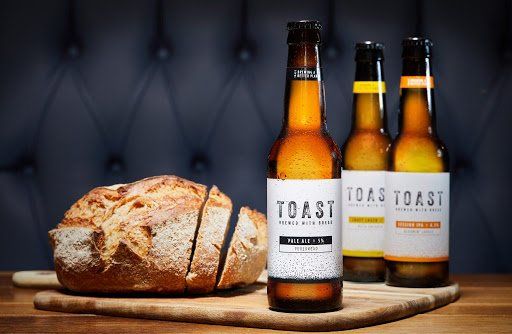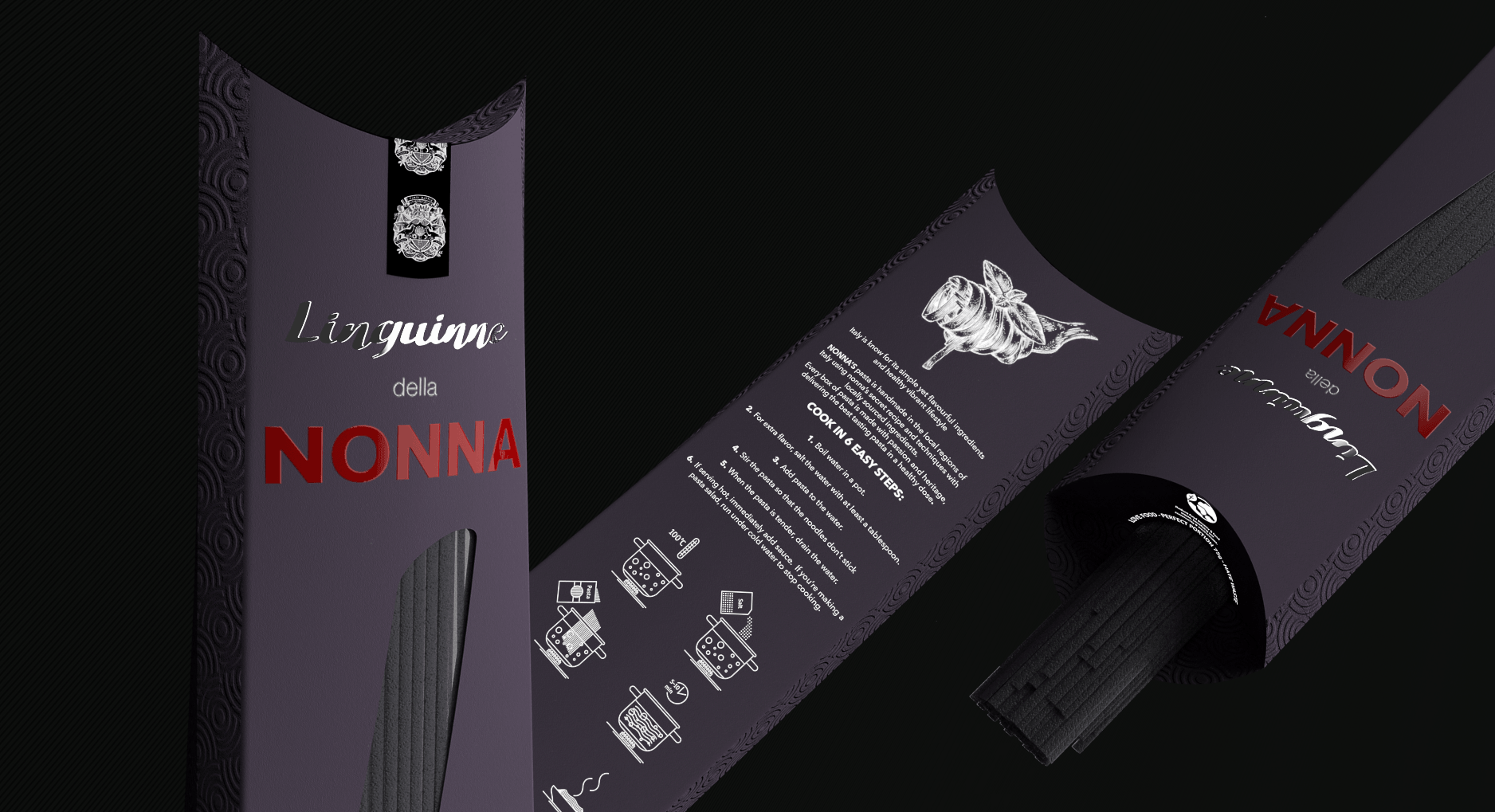Waste not, Want not
Designing out food waste

We can no longer ignore the ramifications of what and how our food consumption is having on the environment as well as our health and wellbeing.
Food loss and waste amount to a major squandering of resources, including water, land, energy, labour and capital and needlessly produce greenhouse gas emissions, contributing to global warming and climate change. Roughly one third of the food produced in the world for human consumption every year – approximately 1,3 billion tonnes – gets lost or wasted and accounts for about 4,4 gigatonnes of greenhouse gas emissions per year. Even if just one-fourth of the food currently lost or wasted globally could be saved, it would be enough to feed 870 million hungry people in the world.
The statistics and consequences food wastage is never ending, whilst it seems like doom and gloom, the issue has given rise to new design innovation as well as technological advancements in the food industry.
We have seen brands emerging and growing such as whole foods, beyond meat, Hippeas, Oatly and many more taking over our shelves and carving out a exponentially growing unavoidable market.
INNOVATION
Impossible Foods, Beyond Meat and Don Lee Farms are just some of the brands that have launched entirely plant-based burgers that ‘bleed’ to emulate the sensations of what a meat burger would offer but without the guilt. A number of brands have created hyper realistic mock meat products that appeal to those who are still eating meat, or may be swayed to make the switch to a plant-based lifestyle based on ethics over their desire to eat meat. As Naturli’ Foods puts it: "We’ve developed this product assuming that many people want to eat plants instead of animals, but are afraid of compromising on flavour and maybe even missing out on their favourite dishes such as lasagne or burger patties."
Plant-based meat uses 47 to 99 percent less land than conventional meat, with median savings of 93 percent. Raising animals for human consumption takes up 77 percent of the world's agricultural land but provides only 17 percent of our food and also creates vast amounts of greenhouse gasses. Its therefore easy to see why this is a growing trend and definitely an area of evolving innovation.
In the very early stages of innovation, decellularization is currently being explored not only medically but potentially for the food industry. This innovation is something straight out of a sci-fi movie, imagine a ‘meat berry’!. Yes it may sound strange but already partially exists.
The idea is to use stem cells (cow for beef) and inject it into decellularized vegetable/fruit structures where eventually the meat grows into the shape of whatever the plant base is.
This is in its infancy but no less an interesting way to tackle food wastage issues by essentially ‘growing meat’ using less land.
Big advancements have also been made in 3D printed food. Whilst this isn’t necessarily something new, we saw Cadbury’s launch 3D printed chocolate, this still has yet to go mainstream. However advancements in 3D printing technology has advanced immensely that it will only be a matter of time before what was once pure fiction, food replicator in Star Trek, becomes a reality.
Food printing also has tremendous potential in the agtech industry since 3D printing can reduce high costs related to labor. In addition, it prevents food spoilage of produce that occurs during the long journey from farm to market. Instead, fruits can be broken down to their powdered micronutrients and rehydrated to their original form through 3D printing at grocery stores, decreasing the chances of damage and loss of produce.
We have seen pasta printing machines before, but the latest news of a 3D printed sushi restaurant has been going viral. A japanese company is fusing science and sushi to create nutrient-rich foods based on individual requirements. open meals wants to create 3D-printed sushi by analyzing the saliva, urine and stool of diners so that every piece is tailored to their needs.
Open meals debuted their 3D printed sushi at the south by southwest interactive festival in Austin last year, under the moniker ‘sushi teleportation‘. it envisioned people searching, downloading and uploading food data to a digital food platform that connected to a robotic arm which could 3D print pixel cubes made from edible gel
With intricately printed and visually stunning geometric sushi, this could potentially pave a way for consumer to 3D print food allowing an on demand bespoke solution for current food wastage, where ingredients may no longer have perishable or expiry dates and would limit throw away food culture.
Knowing that one third of the worlds food produced for human consumptions goes to waste every year, Toast Ale has turned this into an opportunity to establish themselves in the craft beer market, accounting for more than 24% of the $114.2 billion beer market.
Imagine creating one of the world most loved beverage whilst simultaneously help solving one of the world’s biggest issue of food waste! It’s definitely a win win proposition, taking stale unsold bread from shops and turning into ale… GENIUS!
Founder Tristram Stuart calls his product “planet-saving beer,” and gives the profits to charities working to fix the food system".
Craft beer is growing despite the broader beer industry facing some challenges,” he explains. “This is fuelled by a very noticeable shift in drinking patterns. People are increasingly looking for quality over quantity. Drinkers are happy to spend more on one or two premium beers now.”
It’s interesting that when we think sustainable that there is a trade off in quality, experience, flavour etc to balance the ethics, however Toast Ale clearly demonstrates that consumer perceptions are changing. Being ethical and sustainable doesn’t mean to compromise or less quality and that we can have our cake and eat it, but in this case beer!
When we think of food wastage and sustainability, it is easy to concentrate on the negative attributes and forget about a wider human dilemma of wellbeing, poverty as well as deficiencies. We live in a world of not only throw away culture, but easy access food, yes in most developed and third world countries we see a lot of diets that are deficient in one way or another. Also the issue of diabetes as well as other conditions relating bad eating habits is one that contributes to not only waste but health.
What if foods is a brand based in Singapore led by food scientists who’s aim is to provide nutritiously dense meals in the correct portions, which in turn limits wastage of raw ingredients as well as promoting healthy eating. Essentially What if foods create nutritionally efficient meals so consumers know their health needs are met and there is no need to over consume, ultimately leading to less waste.
SOCIAL
Many social campaigns exist today to deal with localised food waste. Even with big brand supermarkets marking down reduced priced items for consumer when products are nearing expiry.
A more socialistic and consumer centric way that a local organisation in the UK , Brixton, is initiating as a campaign known as The Peoples Fridge. Based in one of the poorer communities in London, The People’s Fridge is run by a group of volunteers aiming to help tackle food poverty and cut food waste all at once. The crowdfunded project joins similar campaigns launched in Spain, Germany and India as well as other cities in the UK. The idea is run purely on a trust basis.
DIGITAL
As we propel ourselves further into a digital environment, there have been many apps used to help track and prevent food wastage such as Feedie which turns food photography into charitable donations, Imperfect produce which is a marketplace for discarded produce because of aesthetics, Treasure which looks at taking leftovers from hotel buffets in Singapore, Karma and Olio are perhaps the most creative and well known.
Karma is for the zero waste generation connecting them to restaurants, cafes, shops that has surplus food for a fraction of the regular price.
Olio is a genius app that connects neighbours with left overs or surplus food with each other that not only cuts food wastage but also build social connections. By their own admission Olio is the tinder for food!
The future trend of using digital apps to offer solutions to not only environmental issues will no doubt create cross connections for social and community issues.
PACKAGING
Packaging can help play a huge role in limiting food waste as well as portioning. Most of the innovation in this area tends to be functional negating the emotional needs of the consumer. Cryovac introduced individually sealed meat portions, which is great for extending the lifespan of the product but doesn’t offer much else. While we see product innovation with Fressure brand, turning avocado, into shelf standing, longer lasting product. Whilst this answers a consumer need there is a notion that packed avocado is less fresh and over packaged compare to how avocado's are sold today. Packaging helps protect and preserve the freshness of food. However, materials used don’t exactly benefit the environment. In fact, inefficient packaging is responsible for over 60% of our waste footprint. Specifically, packaging of hair products, beverages, and laundry-related items make up for more than one-third of America’s waste footprint.
In order to alleviate this, the food industry must follow a circular economy model. A circular economy is a cycle where resources are used and kept to their maximum value and time, then reused or recycled to be consumed again. By finding multiple purposes for and different types of packaging, the amount of harmful waste produced can be reduced significantly, minimizing the impact on wildlife and the environment. Loop is a a great example of circular economy producing packaging that brands refill.
There has been some packaging design that addresses portioning which helps limit wastage, spoilage but also help with health and wellbeing. Portioning is a great way to lead as a brand addressing nutritional wellbeing as well as freshness on demand.
Nespresso is a brand that has led by packaging innovation, the portioned pods have become so synonymous and iconic that this is now tied to their brand story. Whilst they have a recycling loop system, their packaging is becoming more sustainable. Not only has this allowed Nespresso to dominate the market but it has allowed them to create vast product line extension.
Packaging is a great way to help brands create shelf standout as well as innovate and engineer value into the pack itself and do so without compromising the consumer experience but rather enhance it.
Nonna’s is a new pasta brand that looks at utilising local Italian grandma’s family recipes and techniques to create ethical limited handmade pasta where partial proceeds are used to help the local senior population keep employed at a comfortable pace whilst allowing them to maintain their independence. Pasta is one of the most common foods loved all over the world and the idea is to emphasis quality and not just produce quantity. The unique cardboard packaging has a distinct engineered form creating brand standout against competitors on shelf as well as help consumers accurately portion the pasta to limit food waste whilst maintaining healthy diet. The pack is easily resealable, sustainable and also runs on current manufacturing lines. The aesthetics is contemporary, modern whilst nuancing traditional Italian heritage.
Designed by WKDstudios
www.wkdstudios.com for more info
Companies have already explored possible packaging alternatives in pursuit of sustainability through decomposing, natural and intelligent materials. In the food industry companies have also begun using edible packaging composed of natural food particles, algae, and sugars and fully-resealable films as eco-friendly and consumer-friendly packaging substitutes.
Jakconi studios have designed a pen that is is made from a percentage of fruit waste that is 100% garden biodegradable after use to leave zero waste and zero trace.
As the world population continues to grow and we shift into a new digital age, food sustainability and health will become more prevalent where we will rely increasingly more on innovation, science and design to help alleviate the issues of food wastage and the environmental impact on land, sea and climate.
Without innovation, the worlds resources will no longer be able to cope with such exponential growth and if we filter these down to microcosm/local effects, this will have rippling effects on not only human nutritional needs, health and well being but also healthcare systems (which are currently struggling to cope).
To ensure that we preserve earth's natural resources for future generations and avoid catastrophic irreversible environmental impact, the time to act is now through innovation and design by educating, changing the habits and lifestyles of consumers with brands on the front line.
If you would like to collaborate and help change the world for the better, get in touch : Collaborate@wkdstudios.com

















